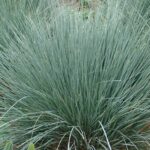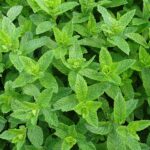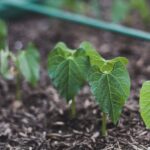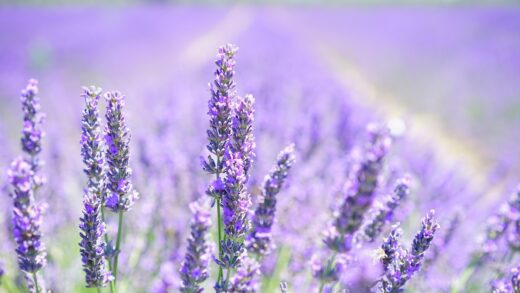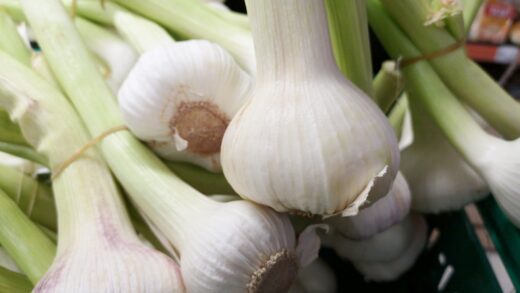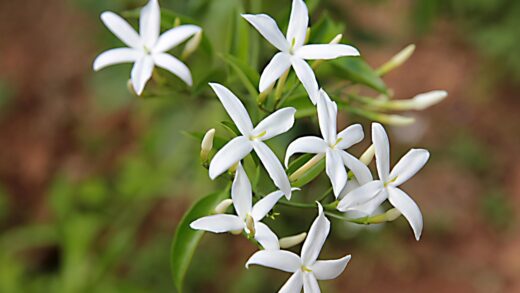The dog rose is a species that thrives on a certain level of neglect, and this is particularly true when it comes to its nutritional needs. In its native habitat, it grows in a variety of soils, often in those of average or even poor fertility. Consequently, it has adapted to be highly efficient at extracting the nutrients it requires from the soil, and it is not a “heavy feeder” like many modern hybrid roses. An overly zealous approach to fertilization can be counterproductive, stimulating an excess of lush, soft foliage at the expense of flowers and the much-prized hips. The goal of any feeding regimen for the dog rose should be to supplement the soil’s natural fertility gently, ensuring the plant has the essential building blocks for healthy growth without overwhelming it with excessive nutrients.
The nutritional requirements of the dog rose are balanced, with a need for the three primary macronutrients: nitrogen (N), phosphorus (P), and potassium (K). Nitrogen is crucial for vegetative growth, supporting the development of healthy leaves and stems. Phosphorus plays a vital role in root development, flowering, and fruit (hip) production. Potassium is essential for overall plant vigor, disease resistance, and the regulation of water movement within the plant. A deficiency in any of these key nutrients can lead to stunted growth, poor flowering, or a general lack of resilience.
Beyond the macronutrients, the dog rose also requires a range of micronutrients, such as iron, magnesium, and manganese, albeit in much smaller quantities. In most garden soils with a healthy amount of organic matter, these micronutrients are readily available. Issues with micronutrient uptake are often related to an imbalanced soil pH rather than an actual deficiency in the soil. For instance, an overly alkaline soil can “lock up” iron, making it unavailable to the plant and leading to chlorosis, which is characterized by yellowing leaves with green veins.
The best approach to feeding a dog rose is to focus on building healthy, living soil. This is achieved by regularly incorporating organic matter, such as garden compost, leaf mold, or well-rotted manure. Organic matter not only provides a slow, gentle release of a wide spectrum of nutrients but also improves soil structure, water retention, and drainage. It creates a thriving environment for beneficial soil microorganisms, which play a crucial role in making nutrients available to the plant’s roots. This holistic approach feeds the soil, which in turn feeds the plant.
The role of essential nutrients
Understanding the specific roles of essential nutrients is key to providing balanced nutrition for a dog rose. Nitrogen is the primary driver of leafy growth, being a fundamental component of chlorophyll, the molecule that enables photosynthesis. A sufficient supply of nitrogen ensures the plant can produce lush, green foliage, which is necessary for energy production. However, an excess of nitrogen can lead to weak, sappy growth that is more attractive to pests like aphids and more susceptible to fungal diseases. It can also inhibit flower production, as the plant directs its energy into creating leaves instead of blooms.
More articles on this topic
Phosphorus is often referred to as the “bloom booster” nutrient, and for good reason. It is critically important for the processes of energy transfer within the plant and is directly involved in the formation of flowers, fruits, and seeds. A healthy supply of phosphorus encourages a profuse display of blossoms and is essential for the subsequent development of large, nutrient-rich hips. It also plays a fundamental role in stimulating strong and extensive root growth, which is vital for the plant’s ability to absorb water and other nutrients from the soil.
Potassium is the guardian of the plant’s overall health and vigor. It helps to regulate many physiological processes, including photosynthesis and water uptake. Importantly, potassium strengthens the plant’s cell walls, making it more resilient to environmental stresses such as drought, cold, and disease. A good supply of potassium ensures the stems are strong and sturdy, and it plays a role in the proper development and ripening of the hips. Plants with adequate potassium are generally more robust and better equipped to fend off common ailments.
In addition to these three primary nutrients, secondary nutrients like calcium, magnesium, and sulfur, along with a host of trace elements, are also required for healthy growth. Calcium is important for cell wall structure, magnesium is a central component of the chlorophyll molecule, and sulfur is a constituent of several amino acids. A balanced, organic approach to soil management, which involves adding compost and other natural amendments, typically provides all of these essential nutrients in the correct proportions, creating a fertile foundation for a thriving dog rose.
Soil analysis and preparation
Before embarking on any fertilization plan, it is highly beneficial to first understand the existing composition of the garden soil. A simple home soil testing kit or a more comprehensive analysis from a local agricultural extension service can provide invaluable information about the soil’s pH and the levels of major nutrients. This knowledge allows for a targeted approach to soil improvement, ensuring that you are only adding what is necessary and avoiding the potential harm caused by over-fertilizing. Knowing the soil’s starting point is the most professional way to manage plant nutrition.
More articles on this topic
Soil pH is a particularly crucial piece of information, as it directly affects the availability of nutrients to the plant. The dog rose prefers a soil pH that is close to neutral, generally in the range of 6.0 to 7.5. If the soil is too acidic (a low pH), nutrients like phosphorus can become less available. Conversely, if the soil is too alkaline (a high pH), it can lead to deficiencies in iron and manganese. A soil test will reveal if any pH adjustment is needed, which can be done gradually by applying garden lime to raise the pH or elemental sulfur to lower it.
Regardless of the initial nutrient levels, almost all soils will benefit from the incorporation of organic matter. Before planting a new dog rose, this is the perfect opportunity to enrich the entire planting area. Spreading a thick layer of well-rotted compost, manure, or leaf mold over the surface and digging it into the top 20-30 centimeters of soil will dramatically improve its structure and fertility. This single act of preparation provides a long-term source of slow-release nutrients and creates a friable, well-draining environment in which the plant’s roots can flourish.
For established plants, soil preparation takes the form of an annual top-dressing. In late autumn or early spring, apply a 2-3 inch layer of compost or well-rotted manure around the base of the shrub, extending out to the drip line (the edge of the canopy). Avoid piling the material directly against the main stems. This mulch will not only suppress weeds and conserve moisture but will also be gradually broken down by soil organisms, slowly releasing its nutrients into the root zone throughout the growing season. This mimics the natural process of nutrient cycling and is the ideal way to feed an established dog rose.
Organic fertilization methods
For a plant like the dog rose that thrives in naturalistic conditions, organic fertilization methods are almost always the superior choice. These methods focus on building the long-term health and fertility of the soil, rather than simply providing a short-term chemical fix for the plant. The cornerstone of organic feeding is the use of well-rotted compost. Compost is a treasure trove of balanced nutrients and beneficial microorganisms. Applying it as a mulch or top-dressing in the spring provides a slow, steady release of everything the plant needs for the season ahead.
Well-rotted animal manures, such as those from cows, horses, or poultry, are another excellent source of organic nutrients. It is crucial that the manure is well-aged or composted before use, as fresh manure is too high in nitrogen and can “burn” the plant’s roots. Composted manure releases its nutrients slowly and also adds valuable organic matter to the soil, improving its structure and water-holding capacity. A layer applied around the base of the plant in early spring will support healthy, sustained growth.
Other organic amendments can be used to target specific needs if a soil test reveals a deficiency. For example, bone meal is a fantastic organic source of phosphorus and calcium, which can be beneficial for promoting strong root growth and abundant flowering. It should be mixed into the soil at planting time or gently worked into the surface around established plants in the spring. Wood ash from a fireplace can be a good source of potassium and can help to raise the pH of acidic soils, but it should be used sparingly as too much can create an overly alkaline environment.
Liquid organic fertilizers, such as compost tea or seaweed extract, can be used as a supplementary feed during the growing season, particularly for plants that appear to need a gentle boost. These liquid feeds are absorbed quickly by the plant and can provide a range of micronutrients and growth stimulants. They can be applied to the soil around the plant every few weeks from spring until mid-summer. However, for a healthy dog rose in good soil, such supplementary feeding is often not necessary.
Using synthetic fertilizers correctly
While organic methods are generally preferred for the dog rose, there may be situations where a synthetic fertilizer is used, for example, to correct a specific and severe nutrient deficiency identified by a soil test. If using synthetic fertilizers, it is imperative to do so correctly and with restraint. These fertilizers are composed of concentrated mineral salts and can easily damage the plant and the soil ecosystem if over-applied. Always read and strictly follow the application rates and instructions on the product label.
A balanced, slow-release granular fertilizer is the most appropriate synthetic option for a woody shrub like the dog rose. These products are designed to release their nutrients gradually over a period of several months, providing a more sustained feed that is less likely to cause a surge of weak, sappy growth. A single application in early spring, just as the new buds begin to swell, is all that is required for the entire season. The granules should be scattered evenly on the soil surface around the plant, from the base out to the drip line, and then lightly raked into the top layer of soil.
Avoid using high-nitrogen synthetic fertilizers, such as lawn feed, on or near your dog rose. Excess nitrogen will stimulate a great deal of leafy growth but will significantly reduce the number of flowers and, consequently, the production of hips. The plant will look lush and green, but it will fail to perform its primary ornamental and fruiting functions. The goal is balanced growth, not just green growth, so a fertilizer with a balanced N-P-K ratio, or one that is slightly higher in phosphorus and potassium, is more suitable.
It is also crucial to water the plant thoroughly after applying any type of granular synthetic fertilizer. Water is necessary to dissolve the granules and carry the nutrients down into the root zone where they can be absorbed by the plant. Applying fertilizer to dry soil can result in a high concentration of mineral salts that can draw moisture out of the roots and “burn” them. By watering well, you ensure the fertilizer is diluted and distributed evenly throughout the soil, making it safe and available for the plant to use.







